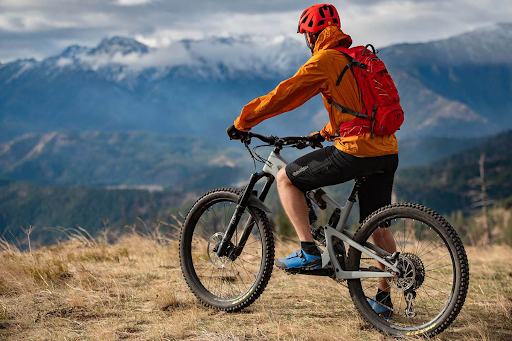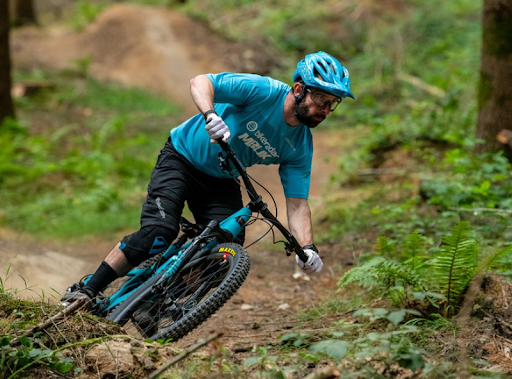 When it comes to mountain bikes, conventional versus electric models are the latest big decision. Visit any mountain bike trail store, and you’ll see that there are as many electric mountain bicycles available as conventional mountain bicycles.
When it comes to mountain bikes, conventional versus electric models are the latest big decision. Visit any mountain bike trail store, and you’ll see that there are as many electric mountain bicycles available as conventional mountain bicycles.
You’ll have fun riding either one, but the experience will differ. That’s due to the build, which makes them completely different from each other. Learning about the differences between electric and conventional mountain bikes will help you decide which suits your needs and expectations best.
How Does an Electric Bike Work?
Although they have the same appearance as standard MTBs, electric mountain bike models come with a crank motor that helps in pedalling, making riding simpler. Electric bikes can feature either a hub motor (which drives the wheel itself) or a pedal-assisted crank motor. Because you’ll rarely see an electric mountain bike with a hub motor, I’ll talk about crank motors (pedal assist).
For the crank motor to kick in, you must pedal. As the power is transferred through the cranks, this will give you a more natural sensation than when the wheel turns around on its own (like with hub motors). The assistance you receive will depend on the force you put through the pedals. In other words, it’s like riding a regular MTB bike with the extra benefit of being able to climb faster and with less effort.
The battery determines how far you can ride. Lightweight lithium-ion batteries, like those found in computers and phones, are used to power an e mountain bike. They just need to be plugged into a mains outlet for a few hours to recharge (the exact amount of time depends on your battery), and you can either keep the battery on the bike or take it off to charge.
How Does a Regular Mountain Bike Work?
A standard mountain bike performs similarly to a conventional one but has additional gearing options. Its sturdy body allows it to easily handle the challenging conditions found in the outback. Robust and broader tiers facilitate a firm hold when cycling, even on slick roads and slopes.
Main Differences
Appearance and Mechanics
Despite having a very similar appearance, there are a few key distinctions between the two types. Their distinct mechanical systems are the main ones. A mountain bike is similar to your typical bike but with wider tires and more gears. An e-MTB is like a larger version of your MTB featuring several electrical wires.
Furthermore, the construction quality of an electric MTB is comparatively stronger than that of a regular MTB. And there’s a good explanation for it. I’m not suggesting that mountain bikes are poorly built; on the contrary, their construction is among the strongest available. However, electric bikes are often stronger due to an additional battery and different mechanics, which also make them heavier.
Power and Assistance
The power boost provided by the E-MTB helps riders navigate difficult terrain and steep ascents. This allows people with different levels of fitness and abilities to enjoy mountain biking. A regular MTB, on the other hand, uses only human pedalling force, requiring greater physical conditioning to handle challenging tracks.
Riding Range and Battery Life
The longer-riding range of E-MTBs is one of their main benefits. Even on challenging uphill slopes, riders may go longer distances without becoming tired thanks to electric motors.
When it comes to battery life, this will vary according to the rider’s weight, topography, aid level, and usage. It’s important to consider the battery capacity and select a bike that fits the length of the journey you plan to do.
Speed and Acceleration
The added torque of the electric motor allows e-bikes to accelerate faster than conventional MTBs. This increased speed can improve the excitement factor and make riding more thrilling. Electric mountain bikes provide a convincing edge over their manual counterparts for riders looking for an adrenaline rush.
Although an eMTB’s speed is dependent on the capacity of its battery, it can be equivalent to that of a standard MTB bike. Like many regular MTBs, an e-MTB often reaches speeds of 32–48 km/h. While it varies from model to model, most of them have adequate power to travel up to 45 kilometres per hour on a single charge.
Although some models have even greater ranges than this, they are often more costly than those with lesser ranges.
Technical Features
Many electric mountain bikes are outfitted with cutting-edge features designed especially for off-road journeys. These might include sturdy brakes, wide, knobby tires for improved grip, suspension systems, and sturdy frames made to endure the higher strains of electric power. Although high-end mountain bikes have comparable characteristics as well, e-bikes usually have specific parts to maximize durability and performance.
Repair and Maintenance
The maintenance and repair procedures for both bikes are quite similar. On the other hand, it’s somewhat scheduled with e-bikes. Since it is a battery-powered bike, the battery will die after years of use. But with proper maintenance, you’ll know in advance when it’s about to happen.
Except for the e-bike’s powered elements, both of these bikes’ repair prices are quite comparable if something goes wrong. With e-MTBs, however, you’ll need a professional who understands their unique characteristics. As previously indicated, e-bike parts are more costly than those for conventional mountain bikes.
Rules and Regulation
The same laws that govern where bicycles can be used legally apply to electric mountain bikes. They cannot be ridden on highways with speed restrictions higher than 40 km/h or on sidewalks. While riding an e-bike, riders must always wear a helmet.
Long-range electric bikes are subject to the same traffic regulations in the UK as bicycles. E-bike laws in the UK stipulate that if you ride a long-range electric bike at night, you must have a convenient LED bike light on it, wear a helmet, and observe traffic signals and signs.
Which One to Choose?
Which of these bikes you choose will entirely depend on your riding style and preferences. However, if using a motor to increase speed is okay with you then an electric bike is the way to go. It’ll not only increase speed but also improve control when riding both on and off-road.
A mountain bike is the best option, though, if you want to experience the sweat and tears that come with riding a bicycle without the aid of electricity.










